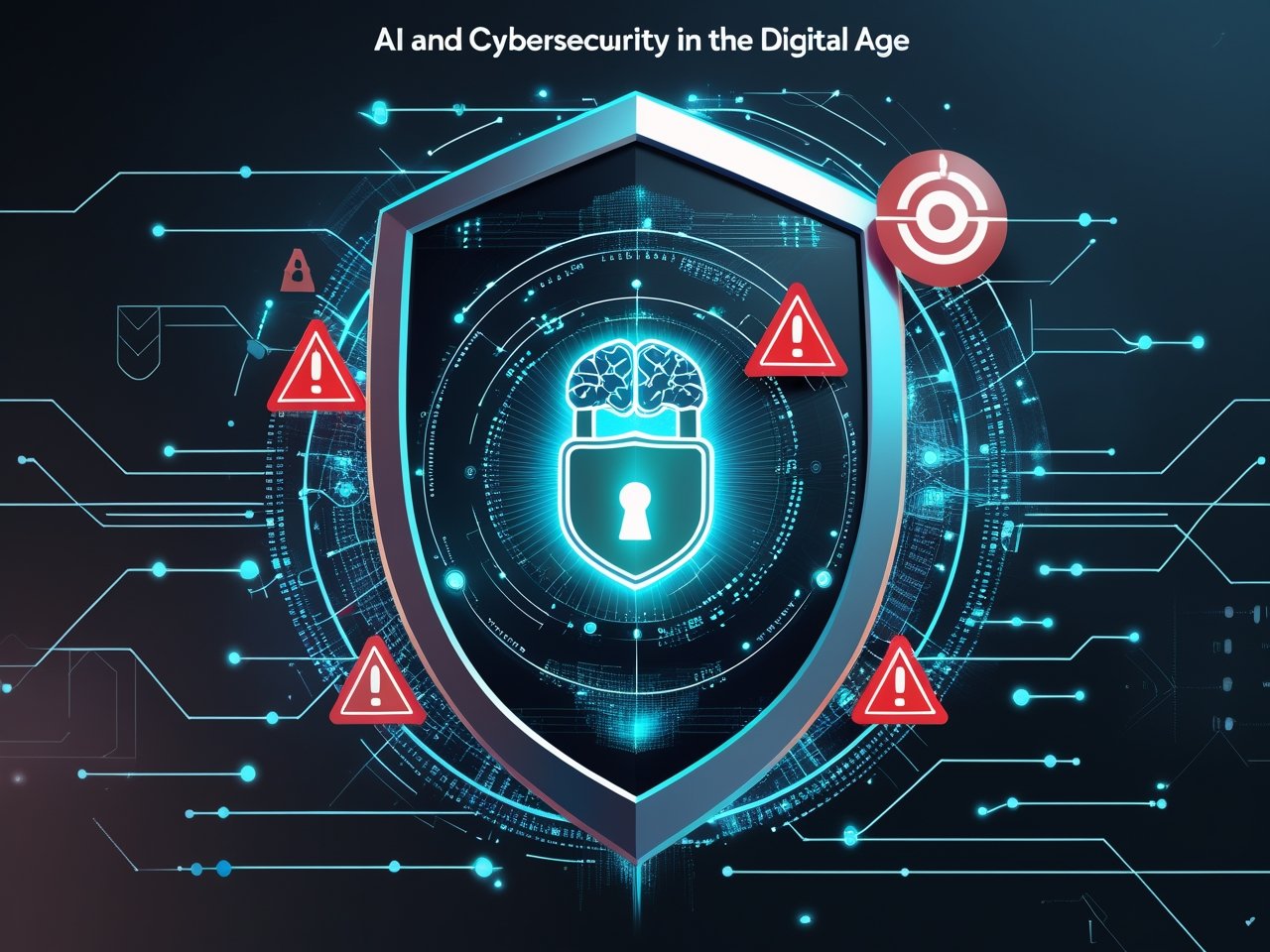In now a day’s interconnected world, the volume of virtual facts is growing exponentially, making cybersecurity a top precedence for people and companies alike. Artificial Intelligence is rising as a powerful tool to beautify cybersecurity measures, presenting superior solutions to defend touchy facts from evolving threats. However, AI additionally introduces new dangers, necessitating a balanced and informed approach to its integration into security structures. This article explores AI and Cybersecurity: Protecting Data inside the Digital Age, the challenges it presents, and strategies for protecting information inside the virtual age.
The Role of AI in Enhancing Cybersecurity
AI is revolutionizing cybersecurity with the aid of enabling structures to detect and reply to threats faster and more appropriately than ever before. Here’s how AI complements protection:
- Threat Detection and Prevention: AI-powered tools analyze giant amounts of statistics in real time, figuring out anomalies that would indicate cyberattacks. Machine studying algorithms can apprehend patterns associated with malware, phishing, and other threats, taking into account proactive mitigation. For example, structures like Darktrace use AI to locate uncommon conduct within a network, preventing ability breaches earlier than they boost.
- Automated Incident Response: When cyberattacks arise, each 2d counts. AI can automate responses to not unusual threats, along with isolating infected devices or blocking off malicious IP addresses, minimizing harm and downtime.
- Enhanced Authentication Systems: AI improves person authentication via incorporating biometric statistics, behavioral evaluation, and anomaly detection. For instance, structures like facial popularity and voice authentication use AI to make certain handiest authorized individuals advantage access to touchy records.
The Risks of AI in Cybersecurity
While AI offers widespread blessings, its misuse and vulnerabilities pose potential risks to cybersecurity:
- AI-Powered Attacks: Cybercriminals are leveraging AI to develop greater sophisticated attacks. AI may be used to create relatively convincing phishing emails, prevent traditional detection techniques, or become aware of gadget vulnerabilities with extra precision.
- Overdependence on AI: Relying entirely on AI for cybersecurity may additionally cause complacency. Automated structures are not infallible and might miss nuanced threats or generate fake positives, which may additionally desensitize protection groups over the years.
- Data Privacy Concerns: AI systems require sizeable amounts of information for training and operation, raising issues approximately statistics privateness and the capacity misuse of sensitive records.
Strategies for Safeguarding Data within the Digital Age
To maximize the blessings of AI in cybersecurity while minimizing risks, it’s vital to undertake a comprehensive method:
- Implement Multi-Layered Security: Combining AI-pushed tools with conventional safety features provides a more robust protection. Firewalls, intrusion detection structures, and encryption ought to complement AI technology.
- Regularly Update and Patch Systems: Ensure that all software and AI models are up-to-date to address acknowledged vulnerabilities. Cybercriminals often make the most outdated structures as access points.
- Conduct AI Audits: Regularly examine AI structures for biases, mistakes, and vulnerabilities. This includes reviewing the first-rate of schooling facts and ensuring that the AI aligns with safety goals.
- Educate Users and Employees: Human error stays a main motive of facts breaches. Training individuals to apprehend phishing attempts, use strong passwords, and observe cybersecurity best practices is critical.
- Monitor and Test Continuously: Continuous tracking and penetration trying out can discover weaknesses in AI-powered structures, making sure that they remain resilient towards emerging threats.
The Future of AI in Cybersecurity
The integration of AI and cybersecurity is an ongoing system that will hold to adapt. Advances in AI, inclusive of federated learning and explainable AI, promise to enhance transparency and collaboration in protection efforts. At the identical time, regulatory frameworks and ethical guidelines will play a critical position in making sure that AI is used responsibly in cybersecurity.
AI is remodeling the cybersecurity panorama, imparting innovative answers to protect records in an increasingly more digital global. However, its implementation comes with demanding situations that require vigilance and proactive measures. This article delves into AI and Cybersecurity: Protecting Data within the Digital Age, inspecting the demanding situations it poses and outlining powerful strategies for shielding touchy statistics in modern digital panorama.







